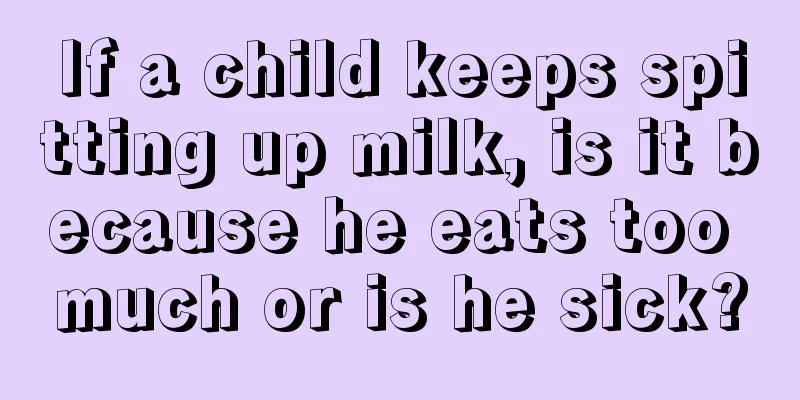What are the developmental indicators of a 1-year-old and 8-month-old baby?

|
I don’t know if you are aware of the developmental indicators of babies aged 1 year and 8 months. Nowadays, many babies are not the same as before. It is common for many babies to have abnormal development, which has also brought great distress to our parents. There are many reasons for this situation. We must find the correct reasons to better treat our own problems. Maybe many parents don’t know much about the developmental indicators of babies aged 1 year and 8 months. Let us learn about the developmental indicators of babies aged 1 year and 8 months! Indicator rules: 1. Height (length) refers to the sum of the lengths of the head, torso and lower limbs. The proportions of the three are different in different stages of the baby. The younger you are, the larger the ratio of your head to your upper body. As you age, your lower body will grow faster than your upper body. The average length of a baby at birth is about 50cm. The height (length) grows fastest in the first year, with an average monthly increase of 2.5cm from 1-6 months, and an average monthly increase of 1.5cm from 7-12 months. At one year old, the baby is about 25cm taller than at birth, which is 1.5 times the height at birth. In the second year after birth, the baby's height growth rate begins to slow down, only increasing by 10-12 cm throughout the year. From the age of 2 until before puberty, the baby's height increases by an average of 6-7cm each year. 2-7 years old baby height calculation formula = age × 5 + 75cm Tips When measuring your baby's height (length), take off his shoes, hat and socks. It is best to measure your height (length) in the morning so that the data obtained will be more accurate. Small and uncooperative babies can be measured in a lying position. When measuring, make sure your knees are straight and someone has their head fixed with hands. Boys of the same age have a slight advantage in height (length) over girls. Monoparticles, such as bottle, bath, ball, drink water. 2. The normal full-term baby weighs about 2.2kg-4.3kg at birth. [1] In the first 3 months, the baby's weight gain is 0.18kg-0.2kg per week, 0.15kg-0.18kg per week at 4-6 months, 0.09kg-0.12kg per week at 6-9 months, and 0.06kg-0.09kg per week at 9-12 months. Calculated by weight gain multiples, the baby's weight at 6 months is twice that at birth, about 3 times at 1 year old, about 4 times at 2 years old, and about 4.6 times at 3 years old. In the second year after birth, the baby's weight increases by an average of 2.5kg-3kg. After the age of 2, the average annual growth rate is about 2 kg until puberty. The above content gives us a detailed introduction to the developmental indicators of a 1 year and 8 month old baby. I believe that everyone must have understood it now. We should learn more about the knowledge that helps children grow up healthily, so that they can grow up happily, fulfill their responsibilities as a parent, and make the whole family happy. |
<<: What is the process of infant vision development?
>>: 27-month-old baby development indicators
Recommend
What medicine should children take for iron deficiency?
When children are growing up, they must have vari...
What to do if your baby has a hoarse voice and coughs
In fact, hoarseness and coughing in babies are ve...
What are the precautions for getting the water bean vaccine?
Diseases are very common in people's daily li...
What should I do if my 3-year-old baby has astigmatism?
Many parents often find that their 3-year-old bab...
At what age can children brush their teeth?
We all know that if we want to have healthy teeth...
How to Ignore a Child's Breathing Difficulty
If a child has difficulty breathing, it is import...
What can a 5-year-old boy eat to promote bone growth?
In recent years, there have been a continuous inc...
What to do if your child's ears itch? A must-read for mothers
When children are sick, they will express it thro...
What to do if your baby's tongue hurts
We have all experienced tongue pain due to fire, ...
Precautions for children's tooth replacement
Tooth replacement is the process in which permane...
How to know if your child is infected with Mycoplasma pneumoniae? What are the symptoms?
Mycoplasma pneumonia is pneumonia caused by Mycop...
What should I do if my eleven-month-old baby has no teeth?
When a baby is just born, his teeth are not fully...
Why is there foam in baby's poop?
Nowadays people are very concerned about the heal...
Children's blood-enriching recipes
Many children are born with anemia, so it is very...
How to get a newborn to sleep
The weather nowadays is hot and cold, which is ac...









